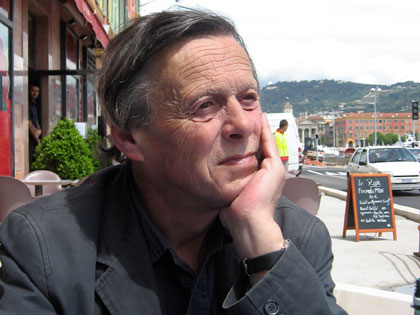Seventy years after Raymond Chandler’s man of honour Philip Marlowe first ventured down the mean streets of Los Angeles, the private eye remains a staple of crime fiction. He’s an absurdly unrealistic figure, of course, and Declan Hughes acknowledges the fact in his fifth Ed Loy thriller.
“The entire PI genre is basically preposterous boys’-own wish-fulfillment fantasy,” a woman in City of Lost Girls scornfully tells Ed. “Lovely girls getting rescued by strong silent men, glamorous women with runaway sexual appetites, wholesale violence, an ever-mounting body count. It’s dinosaur time. Don’t you think?”
“I like those tired old genre conventions,” Ed shruggingly replies, and clearly his creator does, too. And happily for the reader, he has the skills that are required to transplant them to contemporary Ireland. Indeed, City of Lost Girls is the most assured and persuasive of the Ed Loy books I’ve read and it wears its influences – the mood is Ross McDonald rather than Chandler – with considerable aplomb.
It also provides a sardonic and often witty critique of an Ireland that’s “not just reeling from the worldwide recession but sucker-punched to its knees by the Great Celtic Tiger Property Bubble, a hubris-to-nemesis saga that has yet to run its course.” There have been gripes that our so-called “literary” novelists are not confronting the realities of the Ireland we live in, but Hughes is certainly doing it here.
It’s against this vividly realised backdrop that the story unfolds – mainly recounted to us by Ed, but occasionally from the point of view of his girlfriend Anne and also from that of the unidentified serial killer who’s been murdering vulnerable young women in groups of three in Los Angeles and has embarked on a similar mission in Dublin.
The suspects Ed keeps in his sights are four men – his flamboyantly self-destructive movie director friend Jack (distinct echoes of John Huston), along with Jack’s producer, assistant director and cinematographer, all of whom had worked together on locations where young women had gone missing.
In a subsidiary storyline, an old gangster nemesis of the private eye, Podge Halligan (“volatile and violent and possibly insane”), is due for release from prison, with potentially lethal consequences for our hero. This storyline intersects with the main plot at the climax, providing a resolution that some readers may find a little too neatly symmetrical. In contrast, while the mania of the serial killer is frighteningly conveyed, his motivations remain blurry right to the end.
Along the way, though, there are many pleasures, not least the way in which Hughes’s lithe and limpid prose lends the narrative both pace and pithiness, while the chapters seen from Anne’s point of view provide a bracingly individual alternate perspective. And I liked, too, the insertion of a cod newspaper review in which Jack, scoffed at for his Oirishy performance on the Late Late Show, is described as “an altogether ridiculous figure, Edna O’Brien with a beer belly,” with Bono at the sharp end of a similarly gleeful skewering.
In brief, this is a compelling thriller that also manages to be a wry social critique – not so much The Way We Live Now by Anthony Trollope as The Way We Die Now by Charles Willeford. Hughes, though, remains his own man.
